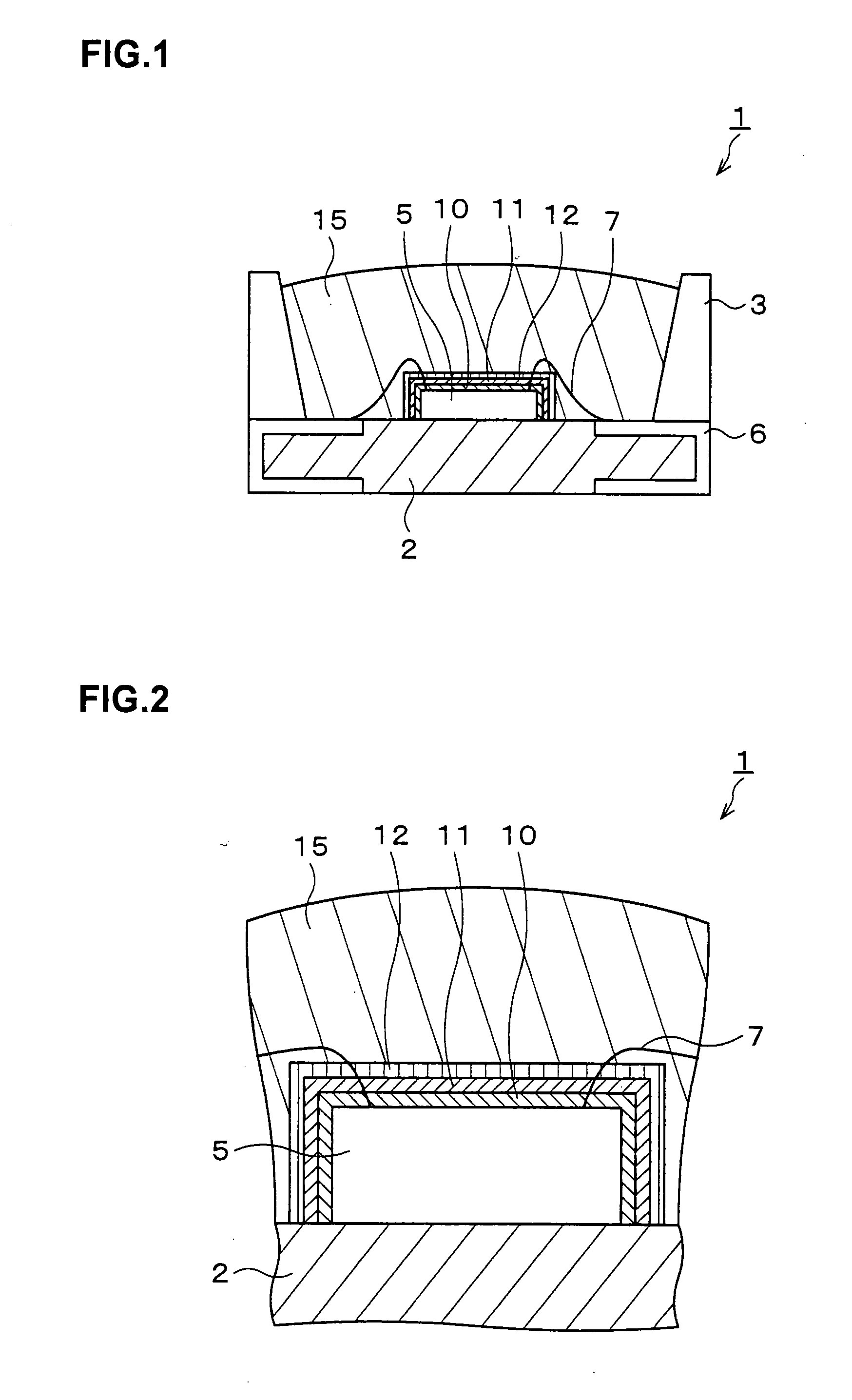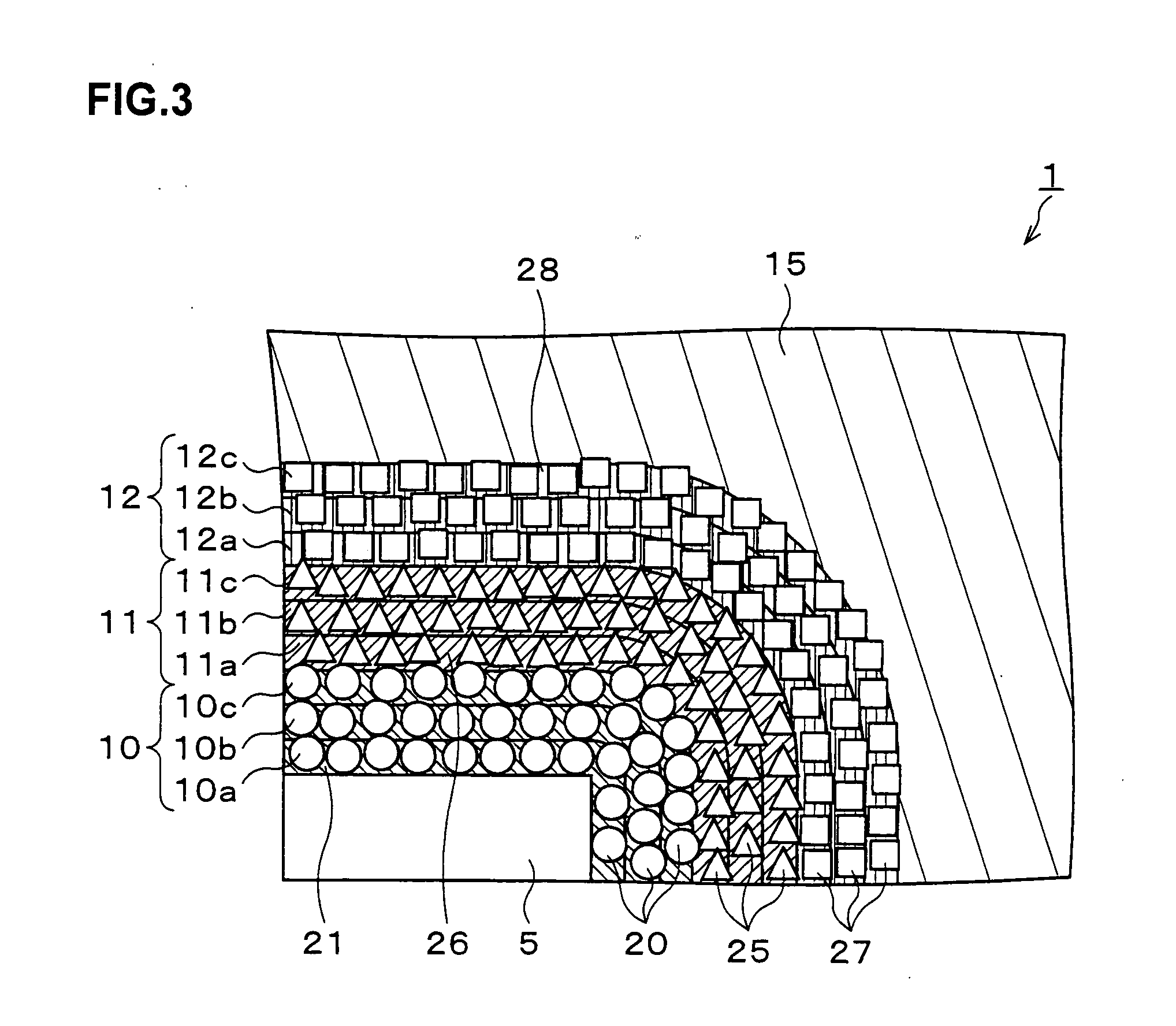Light-emitting device and manufacturing method thereof
a technology of light-emitting devices and manufacturing methods, which is applied in the manufacture of electrode systems, electric discharge tubes/lamps, and discharge tubes luminescent screens, etc., can solve the problems of increasing the tone unevenness of light passing through the optical element, the inability of phosphors to be thinly and uniformly disposed around the light-emitting element b>5, and the increase of the tone unevenness of light collected by the optical lens. , to achieve the effect o
- Summary
- Abstract
- Description
- Claims
- Application Information
AI Technical Summary
Benefits of technology
Problems solved by technology
Method used
Image
Examples
example 1
[0105]The light-emitting device 1 shown in FIG. 2 was formed in which the three different phosphor layers 10, 11, 12 were stacked directly on the light-emitting element 5 emitting ultraviolet light whose main emission wavelength was 405 nm. In the example 1, CaAlSiN3:Eu was used as the phosphors 20 contained in the phosphor layer 10, SrAl1+xSi4−xOxN7−x:Ce was used as the phosphors 25 contained in the phosphor layer 11, and SrAlxSi6−xO1+xN8−x:Eu was used as the phosphors 27 contained in the phosphor layer 12. A particle size of the phosphors 20 was adjusted to 10 μm or less, a particle size of the phosphors 25 was adjusted to 13 μm or less, and a particle size of the phosphors 27 was adjusted to 20 μm or less.
[0106]When a cross section of the above sample was observed, occupancy ratios of the phosphors 20, the phosphors 25, and the phosphors 27 in the phosphor layer 10, the phosphor layer 11, and the phosphor layer 12 were all 50% or more, specifically 60%. Thickness variation (diffe...
PUM
 Login to View More
Login to View More Abstract
Description
Claims
Application Information
 Login to View More
Login to View More - R&D
- Intellectual Property
- Life Sciences
- Materials
- Tech Scout
- Unparalleled Data Quality
- Higher Quality Content
- 60% Fewer Hallucinations
Browse by: Latest US Patents, China's latest patents, Technical Efficacy Thesaurus, Application Domain, Technology Topic, Popular Technical Reports.
© 2025 PatSnap. All rights reserved.Legal|Privacy policy|Modern Slavery Act Transparency Statement|Sitemap|About US| Contact US: help@patsnap.com



